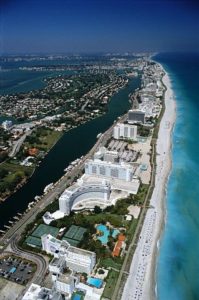By: Bob Martens
 Subscriber question:
Subscriber question:
“I avoid flying when crosswinds are present, even if they aren’t that strong. How can I get over this fear?” – Harold P.
Bob:
“Far too many pilots share in this fear of crosswinds, the root of which goes back to our initial training. Far too often, crosswinds are a contributing factor in small airplane accidents.
The design of aircraft obviously makes them vulnerable to crosswinds. But a good instructor will train their students that the pilot has everything they need to deal with crosswinds available in the flight controls.
On downwind we crab as necessary to maintain a track parallel to the landing runway. On final, there is much discussion as to whether the pilot should crab again into the wind until just before touchdown or fly a wing low approach while maintaining alignment with rudder. Either technique works, but the timing on removing the crab prior to touchdown is critical to a safe landing.
A simple technique to gain confidence with crosswinds is to fly a low approach over the runway, using your flight controls to maintain alignment. It won’t take long to realize that rather than living in fear of crosswinds, we merely have to realize how they are impacting our aircraft and respond accordingly. Obviously, winds can be gusty and variable so constant vigilance is required to proactively maintain positive aircraft control.
Remember, all manufacturers publish a (recommended) crosswind limit that must be respected by the pilot. And depending upon your personal experience and training you may very well have a limit more cautious than the manufacturer, but all pilots should understand and be comfortable flying their aircraft during crosswind conditions.”
To see complete article: https://www.pilotworkshop.com/tips/crosswind-fears




 Spread your wings and fly above Miami
Spread your wings and fly above Miami Subscriber question:
Subscriber question: